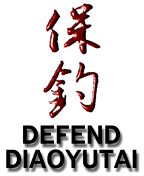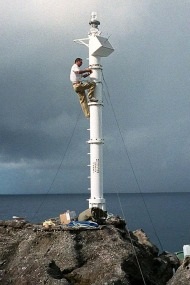Until 1968, neither Japan and China saw any value in the bunch of barren islets and rocks that comprise the Senkaku/Diaoyu Islands. Their attitudes changed when the Committee for Co-ordination of Joint Prospecting for Mineral Resources in Asian Offshore Areas, under the auspices of the UN Economic Commission for Asia and the Far East, reported substantial energy deposits under the East China Sea. Since then, China has been uses historical records and the natural prolongation principle to buttress its claim to the islands. Japan, who has held administrative control over the islands since 1972, adheres its policy and claim to the "discovery" theory in international law.
pro-China perspective

According to historical records written by the Ming military defense system, the Chinese discovered and named the islands as early as 1403. Natives of Liuqiu or Ryukyu, which was an independent country until Japan annexed it in 1879, and the Ming and Qing dynasties, all have the Chinese name of "Diaoyutai Islands" recorded in historical documents. In accordance with the Treaty of Shimonoseki was signed after China's defeat in the 1894 Sino-Japanese War, China ceded Taiwan "and its surrounding islands", which China says includes the Diaoyu Islands, to Japan. The 1943 Cairo Declaration stipulated that Japan must return all Chinese territories and 1945 Potsdam Proclamation, which Japan accepted upon its surrender, called for the execution of the terms of the Cairo Declaration. The 1971 Okinawa reversion treaty supposedly stipulated that the U.S. return what it took after Japan's defeat in World War II. China claims that the U.S. never had the rights to the Diaoyu Islands and thus cannot actually return them to Japan.
pro-Japan perspective

This photo taken on September 9, 1996 shows a member of Japan's right-wing group Nihon Seinensha (Japan Youth Association) repairing a lighthouse on one of the disputed islands.
Groups that support Japan's claim to the islands point to 1884 when businessman Koga Tatsushiro rediscovered an islet in the Senkaku Islands, and started a business there. The Okinawa prefecture survey indicated that the disputed islands were uninhabited, and thus was terra nullius, latin for no-man's land. Based on the survey results, the Japanese government placed the islands under the jurisdiction of the Okinawa prefecture by erecting a territorial landmark. The U.S. took Okinawa after Japan's surrender in World War II but returned it, the Senkaku Islands included, in the 1971 Okinawa Reversion Treaty.
To know more about the controversy, or for any inquiries about the website, contact the author at [email protected]